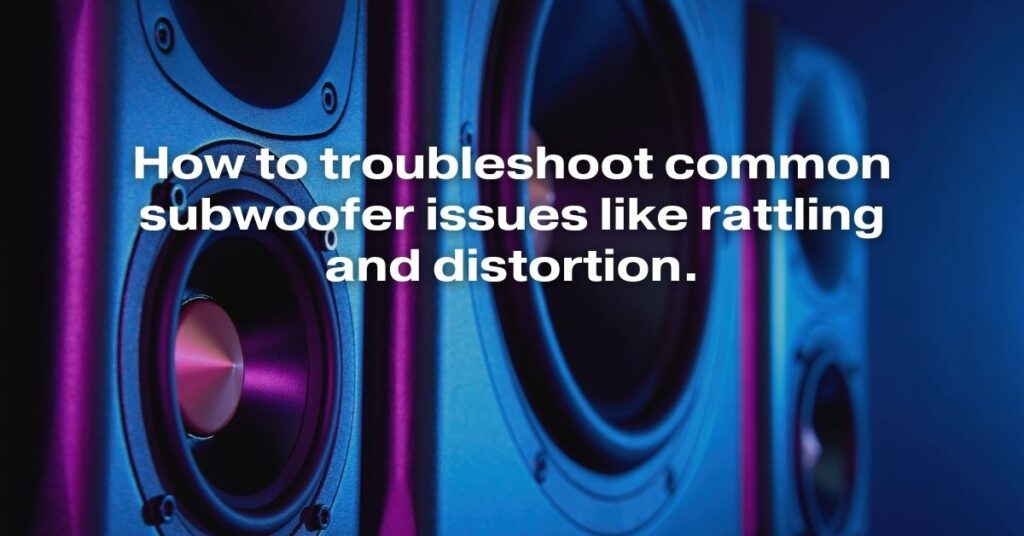Subwoofers are an essential component of any home theater or music system, providing the deep bass that brings movies and music to life. However, subwoofers can also be prone to problems, such as rattling and distortion. These issues can be frustrating, but they can often be resolved with some simple troubleshooting steps.
Rattling
Rattling is a common subwoofer issue that can be caused by a number of factors, including:
-
Loose connections: Check all of the connections between the subwoofer and the receiver or amplifier. Make sure that the cables are securely plugged in and that there are no loose wires.
-
Damaged speaker cone: If the speaker cone is damaged, it can cause rattling. Inspect the cone for any tears or holes. If you find any damage, you will need to replace the speaker cone.
-
Loose enclosure: If the subwoofer enclosure is loose, it can vibrate and cause rattling. Tighten any screws or bolts that are holding the enclosure together.
Distortion
Distortion is another common subwoofer issue that can be caused by a number of factors, including:
-
Overpowering the subwoofer: If you are overpowering the subwoofer, it can cause distortion. Try turning down the volume or adjusting the crossover settings.
-
Clipping: Clipping occurs when the amplifier is trying to output more power than it is capable of. This can cause the audio signal to become distorted. Try turning down the volume or using a more powerful amplifier.
-
Damaged voice coil: If the voice coil is damaged, it can cause distortion. This is a more serious issue that will likely require professional repair.
Additional Tips
-
Placement: The placement of your subwoofer can also affect its performance. Try placing the subwoofer in different locations in your room to see if it makes a difference.
-
Room acoustics: The acoustics of your room can also affect the sound of your subwoofer. If your room is too reflective, it can cause the bass to sound boomy. Try adding some acoustic treatments to your room, such as rugs, curtains, or acoustic panels.
-
Calibration: Many subwoofers have built-in calibration systems that can help you optimize the sound of your subwoofer for your room. Consult your subwoofer’s manual for instructions on how to calibrate your subwoofer.
If you have tried all of these troubleshooting steps and you are still having problems with your subwoofer, you may need to consult a professional.
I hope this article has been helpful. Please let me know if you have any other questions.

